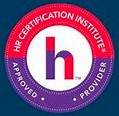Writing Effective and Legally Compliant Job Descriptions
Duration : 90 Minutes

This course, has been approved for 1.5 HR (General) recertification credit hours toward aPHR™, PHR®, PHRca®, SPHR®, GPHR®, PHRi™ and SPHRi™ recertification through HR Certification Institute® (HRCI®).
Dr. Steven G. Meilleur,
Steven G. Meilleur, Ph.D., SPHR – is President, CEO – PRAXIS Management Solutions, LLC, a New Mexico-based management consulting firm specializing in human resources, employee relations, leadership, training & organizational development, organizational research and assessment, stra Read more
There’s no federal law that requires employee job descriptions. Yet, when you know how to write them well and keep them up to date, these documents have significant practical and legal payoffs. They smooth the hiring process. They outline clear expectations for employees’ responsibilities and results. And yes, they can help keep your organization out of legal hot water in the case of a discrimination or wrongful termination lawsuit.
Job descriptions are much more than a recruitment tool - they are legal documents. If you are using outdated, inaccurate, or incomplete job descriptions you may be inviting trouble with various employment laws, including the Fair Labor Standards Act, the Americans with Disabilities Act, the Family and Medical Leave Act, and Title VII of the Civil Rights Act of 1964.
Job descriptions should clearly provide employees, managers, and HR professionals with a realistic picture of job duties, as well as clear performance expectations and standards. They form the basis for effective job evaluations and provide a defense for employers in the hiring and promotion process, employee classifications and disability accommodation claims should they arise. Unfortunately, many employers either do not have any job descriptions, or their job descriptions are out-of-date or insufficient.
This webinar will instruct employers on the preparation and use of job descriptions in the workplace and how job descriptions can act as an effective defense to various employment claims.
Why Should You Attend:
A job description is the first document examined in an internal employment dispute and is also the first document reviewed in a legal dispute or during a regulatory agency’s investigation. Since your job descriptions are used for such a myriad of critical HR purposes, make sure they help achieve your human resources and organizational goals.
Course Outline:
• Key elements to include in every job description
• Linking essential job functions to performance outcomes
• Legal considerations (ADA, ADAAA, FMLA, Workers Compensation, and FLSA) for job descriptions
• Doing a proper job analysis of responsibilities, duties, and expectations
• Required knowledge, skills, and abilities – writing good KSAs
• Including conduct and behavior standards in the job description
• How to use job descriptions to drive effective performance management
• When and how to review and update your current job descriptions
What You Get:
• Training Materials
• Live Q&A Session with our Expert
• Participation Certificate
• Access to Signup Community (Optional)
• Reward Points
Who Will Benefit:
• HR professionals
• Managers
• Supervisors
• Business owners
• Payroll professionals
Please reach us at 1-888-844-8963 for any further assistance or if you wish to register

100% MONEY BACK GUARANTEED
Refund / Cancellation policyGet In Touch
Similar Trainings
Linking Pay to Performance: Increasing Employee Engagement & Organizational Performance
LIVE : Scheduled on
03-April-2025 :01:00 PM EST
|
